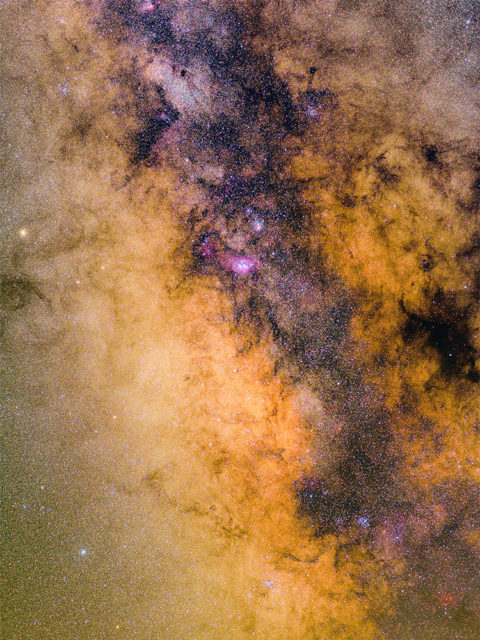Most of my Milky Way photographs are shot using a wide-angle (24 or 28 mm focal length), or ultra-wide-angle lens (16 mm focal length). These create an image that shows a large portion of the Milky Way. But sometimes it’s fun to zoom in a bit and focus (no pun intended) on a much smaller section of the sky.

A few days after the full Moon provided a great opportunity to do this. The Moon would not rise until about an hour after astronomical twilight ended and, more importantly, there were very clear skies.
I used a Nikon D750 body with a Nikon 85mm f/1.8 lens for this session. This is designed to be a portrait lens but I find it makes a pretty good astrophotography lens as well because of the excellent light-gathering f/1.8 aperture and the corner-to-corner sharpness resulting in nice round stars. At least, that is, when I get sharp focus and accurate tracking.
I shot 10 images of 120 seconds exposure time and used Long Exposure Noise Reduction (LENR). I was unable to use the 10th exposure because the sky was already getting brighter even though the Moon was still below the horizon. The result was 9×120 seconds or 18 minutes of light gathering.
I have several different applications (both Mac and Windows) for star stacking and alignment and chose to use Starry Sky Stacker this time with good results. Once I had the stack completed I used rnc-color-stretch for histogram stretching with final postprocessing done in Lightroom 6/Photoshop CS6.

This is the final result. I think the colors might be a bit too saturated—but I don’t dislike the result. Artistic license invoked here.